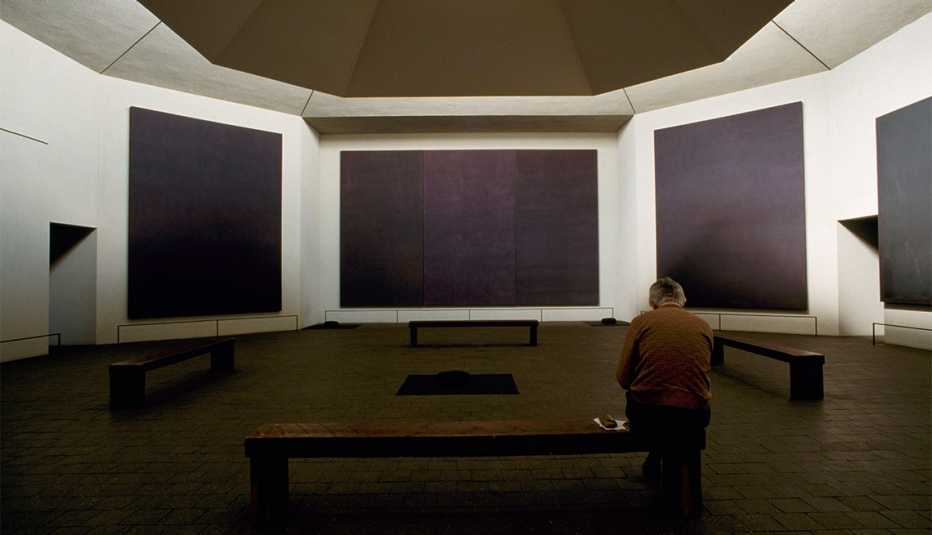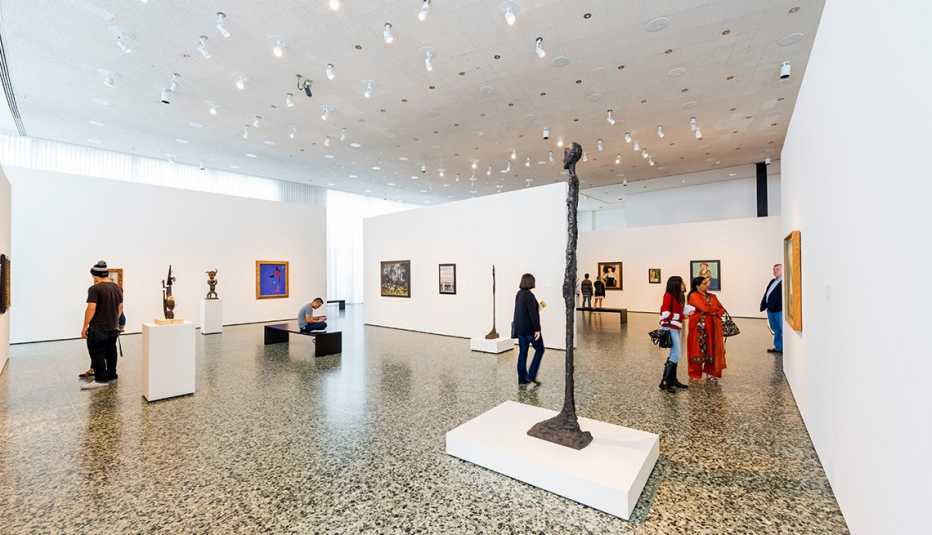AARP Hearing Center
While mourning the death of my grandmother recently, I made my first visit to the Rothko Chapel in Houston. The octagonal, minimalistic sanctum, anchored by a reflective pool, looked nothing like a conventional house of worship, yet it drew me in immediately. Something healing flowed out.
In 1964, art collectors John and Dominique de Menil commissioned abstract expressionist Mark Rothko to design this ecumenical structure. Completed in 1971, a year after Rothko’s suicide, the chapel showcases 14 of this master’s paintings, each featuring a series of mysteriously dark, subtle hues: grays, purples, even greens. They took me inside myself in a grounding way — centering me on that first visit, as well as on subsequent ones.
Houston reigns as an arts and curiosities mecca, as evidenced by its prized Museum District, home to not only this chapel but 18 other institutions grouped into four walkable zones about 4 miles south of downtown. Displaying objects as varied as the largest emerald crystal found in North America, Byzantine icons and Jackson Pollock paintings, the district offers something for every mood. There’s even a 55-acre zoological park.
You can’t experience the entire district in one trip, but here’s a doable plan for a three-day museumfest.


Day 1: Rothko Chapel and the Menil Collection
Start your visit in Zone 1 at the Rothko Chapel, which celebrated its 50th anniversary in 2021 with the launch of a $30 million restoration and expansion project. The first phase has been completed, with the most dramatic change a new skylight that brings in dreamy rays of brightness, like moonbeams illuminating a garden wall. The original oculus released too much light and had been partially covered for years to darken the room, which sometimes made the chapel too shadowy for visitors to see the paintings with clarity.
Plan Your Trip
Rothko Chapel
Location: 3900 Yupon St. (free street parking on Branard, Sul Ross and Yupon streets, or park in the Menil Collection parking lot); rothkochapel.org
Visit: Tuesday–Sunday
Admission: Free
Accessibility: All entrances are wheelchair accessible, with no ramps or steps. There are also no stairs or inclines inside. You’ll find a wheelchair-accessible restroom in the welcome house.
The Menil Collection
Location: 1533 Sul Ross St. (parking available in the main parking lot, on the south side of the campus, a short walk from the main building); menil.org
Visit: Wednesday–Sunday
Admission: Free
Accessibility: Accessible parking available in the parking lot. Building entrances have no stairs, and all buildings are easily accessible inside. Wheelchairs available at no charge (first come, first served).
Next, make the short walk through leafy Menil Park to the Menil Collection, a 30-acre museum campus with multiple buildings showcasing the wealthy de Menils’ private art collection, one of the world’s largest and most dynamic. There’s plenty to impress here, especially the African sculptures, antiquities and modern art. (Note: The term “Menil Collection” refers to the entire campus as well as to the actual cache of de Menil–owned art.)
Exhibitions rotate, drawing from the museum’s vast collection of permanent treasures, a hoard of 17,000 drawings, paintings, photos, prints, rare books and sculptures. Not meant to be comprehensive, the collection highlights the variety of artwork across centuries and cultures. Uniquely, you won’t find any explanations in the various rooms; the objects and art speak for themselves, without any commentary from experts.



































































